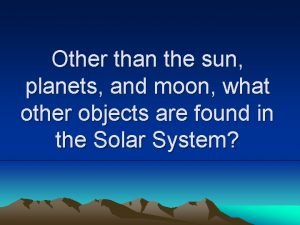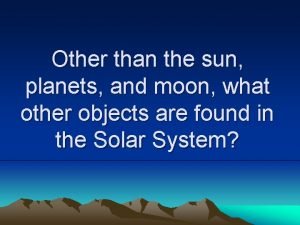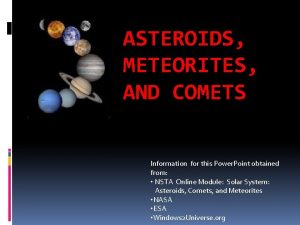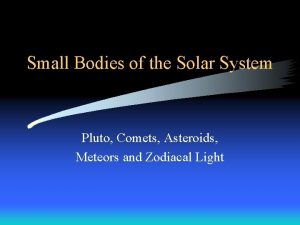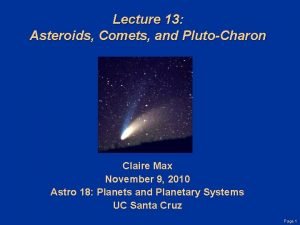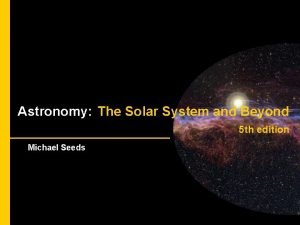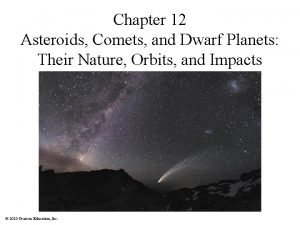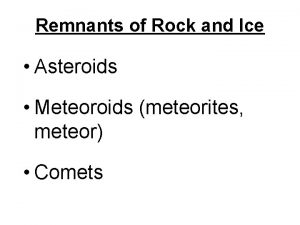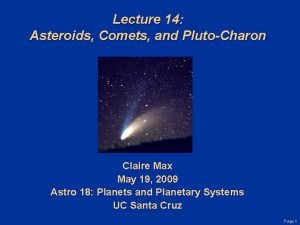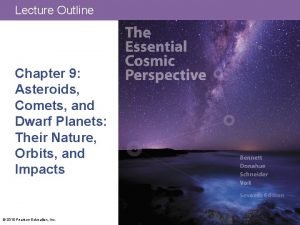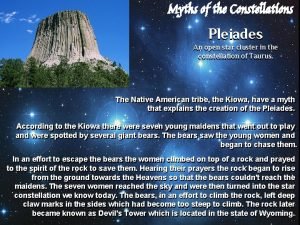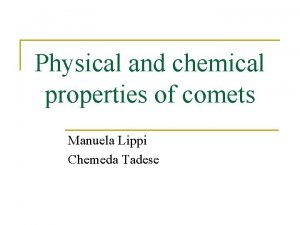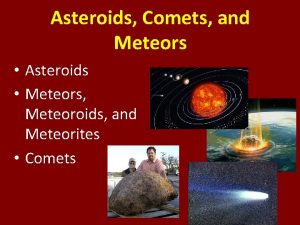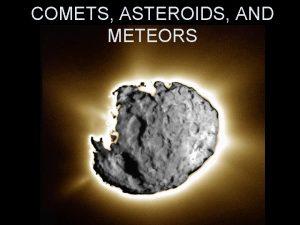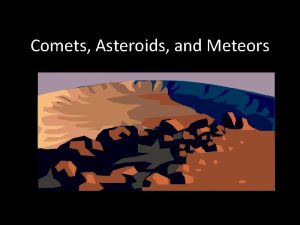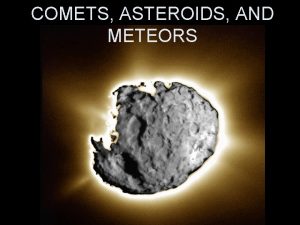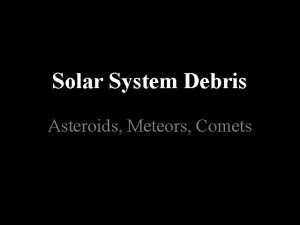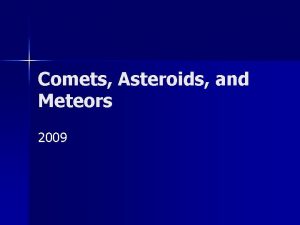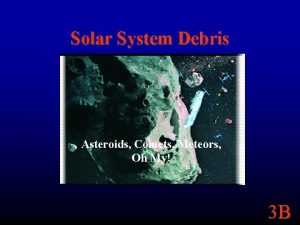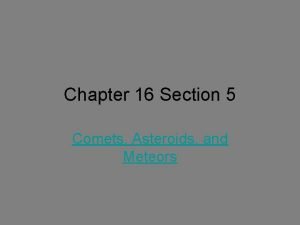SOLAR SYSTEM v Comets v Asteroids v Meteors












- Slides: 12

SOLAR SYSTEM v. Comets v. Asteroids v. Meteors v. Moons v. Planets v. Sun Remember CAMMPS All objects in our solar system revolve around the sun because it has the strongest gravitational pull.

Sun • Average-sized star • Diameter 870, 000 miles • Mostly made of hydrogen gas • Contains 99% of all material in the solar system • Temp. range from 1 million °F inside core to 10, 000°F at surface

Mercury • Revolution Time: 88 days • Rotation Time: 59 days • Planet closest to the sun • Greatest temperature difference from day to night • Very thin atmosphere • Covered with craters • No moons, No rings

Venus • Revolution Time: 225 days • Rotation Time: 243 days • Earth’s sister planet – similar size and surface • No moons, No rings • Very thick atmosphere of carbon dioxide and clouds of sulfur • Hottest planet because of global warming gases (greenhouse effect)

Earth • Only planet with liquid water • Atmosphere of 78% nitrogen and 21% oxygen • One moon, No rings • Rotation – 24 hours • Revolution time – 365 days

Mars • Revolution Time – 687 days • Rotation Time – 24 hrs 40 min • 2 moons, No rings • Atmosphere of carbon dioxide • Red color from iron oxide(rust) in the soil • Largest volcano – Olympus Mons

Jupiter • Revolution time – 11. 9 Earth years • Rotation time – 9 hrs 55 min • 50+ moons, faint rings • Biggest planet • Made of gas, no solid surface • Great Red Spot, a hurricane-like storm on the surface • Atmosphere of hydrogen and helium

Saturn • Revolution time – 29 ½ yrs • Rotation time – 10 hrs 40 min • 53 moons • Most known for its rings • Rings made of rocks and dust • Atmosphere of hydrogen and helium • Would float in water

Uranus • Revolution time – 84 years • Rotation time – 17. 3 hours • Bluish green in color • 11 Rings • 27 moons • Rotates on its side • No solid surface • Atmosphere – 84% hydrogen

Neptune • Revolution time – 165 years • Rotation time – 16 hours • Fastest winds • Faint rings • 13 moons • Blue color from methane in atmosphere • Two dark storms on surface – Great Dark Spot and Scooter

Pluto • Revolution Time – 248 years • Rotation Time – 6 days 9 hours • 3 moons • Switches orbit with Neptune for 20 years of its revolution • Now considered a “dwarf planet” • Atmosphere of nitrogen and methane

Saturn is the only planet that can float in water!!! http: //pds. jpl. nasa. gov/planets/welcome. htm
 What is the difference between meteors and comets
What is the difference between meteors and comets Asteroids meteors and comets worksheet
Asteroids meteors and comets worksheet Difference between comets and asteroids and meteors
Difference between comets and asteroids and meteors Comets asteroids
Comets asteroids Comets asteroids
Comets asteroids Origin of meteorites
Origin of meteorites Origin of asteroids
Origin of asteroids Asteroids
Asteroids A rocky leftover planetesimal orbiting the sun is
A rocky leftover planetesimal orbiting the sun is Jupiter nudges the asteroids through the influence of
Jupiter nudges the asteroids through the influence of Myths about comets
Myths about comets Physical properties of comets
Physical properties of comets Wholesale panel solar cell
Wholesale panel solar cell
